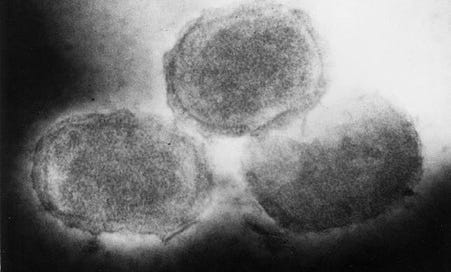Having a hairless pubic area has been gaining popularity among women, and men, for some time now for those seeking a “clean”, sexy look. However, “Brazilians” and other forms of pubic hair removal doesn’t come without some infection risk, says some French dermatologists in a letter in the online journal, Sexually Transmitted Infections March 19, 2013.
Dr. Francois Desruelles, of the department of dermatology at Archet Hospital in Nice and his colleagues say that an increase in the viral disease, molluscum contagiosum, in recent years may be attributed to the trend of shaving or waxing the hair around the genitals.
The researchers looked at a potential link between pubic hair removal and the viral skin/ sexually transmitted infection with patients at their skin clinic in Nice, France, between January 2011 and March 2012.
Of the 30 cases infected with Molluscum contagiosum during this time, six were women, and the average age of the entire group was 29.5. Signs of the infection (pearly papules) had spread up to the abdomen in four cases and to the thighs in one. In 10 cases, there were other associated skin conditions, including ingrown hairs, warts, folliculitis (bacterial skin infection), cysts and scars.
Among the 30 patients, most (93 percent) had had their pubic hair removed, with most opting for shaving (70 percent). Among the rest, it had either been clipped (13 percent) or waxed (10 percent).
“Hair removal, especially shaving, could favor its acquisition, propagation and transmission, by micro-traumatisms,” the group wrote in the letter to the journal.
However, pubic hair removal is not all bad according to a researcher from University of New South Wales’s Kirby Institute. Basil Donovan, head of sexual health at the University says that “Brazilians” and other pubic hair removal has been linked to a decrease in pubic lice, or crabs, according to a Bloomberg report in January.
Molluscum contagiosum is a viral infection of the skin caused by a poxvirus. It results in lesions that are smooth, firm and spherical ranging in size from 2-5mm. The lesions may be yellow, white or flesh colored. They may show an indentation at the top of the lesion.
This infection is most frequently seen in children where the lesions appear on the face, trunk and extremities. In adults it is usually associated with being a sexually transmitted infection with lesions seen on the lower abdomen, genitalia or inner thighs.
Immunocompromised people tend to develop hundreds of disseminated lesions over the body and face. This may be explained by scratching of the lesions (autoinoculation).
Molluscum contagiosum is usually spread through direct contact, sexual or non-sexual. Non-sexual transmission is often through inanimate objects such as toys, doorknobs and faucet handles.
Scratching and shaving over lesions can cause it to spread through autoinoculation. It is found worldwide.
In immunocompetent people the viral infection will usually resolve itself within two years at the high end.
SOL DE JANEIRO Brazilian Play Moisturizing Shower Cream Gel Body Wash
In adults, removal of lesions is frequently recommended to shorten the length of the disease. This can be done by scraping, freezing or laser therapy. There is no medicinal treatment that satisfactorily treats the infection.
Diagnosis can usually be made clinically. Confirmation can be made by examining the lesion microscopically for classic “molluscum” or “Henderson-Paterson bodies”.
Prevention of molluscum contagiosum is through avoiding skin contact, particularly sexual contact with an infected person. Also not sharing personal items like bath towels and sponges will help prevent infection. To avoid spreading lesions and autoinoculation, do not scratch or shave over lesions.





